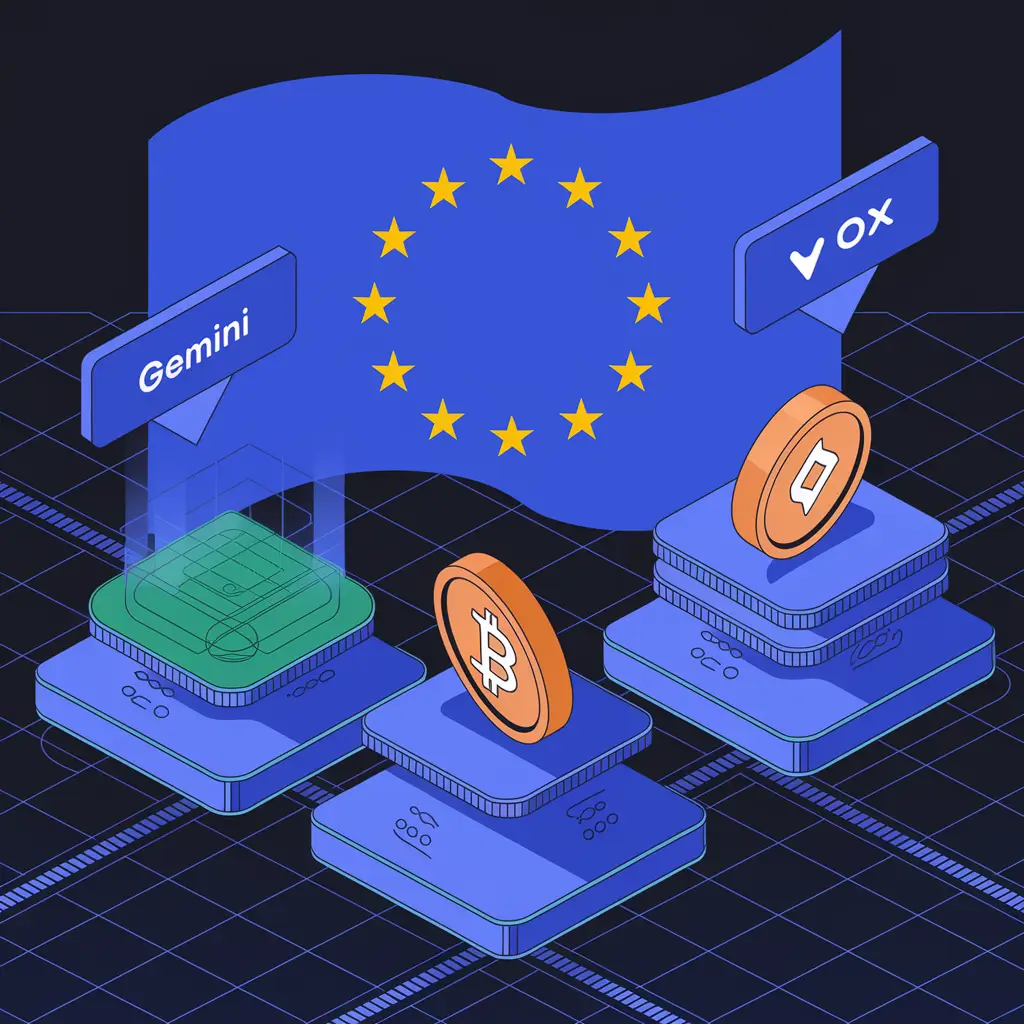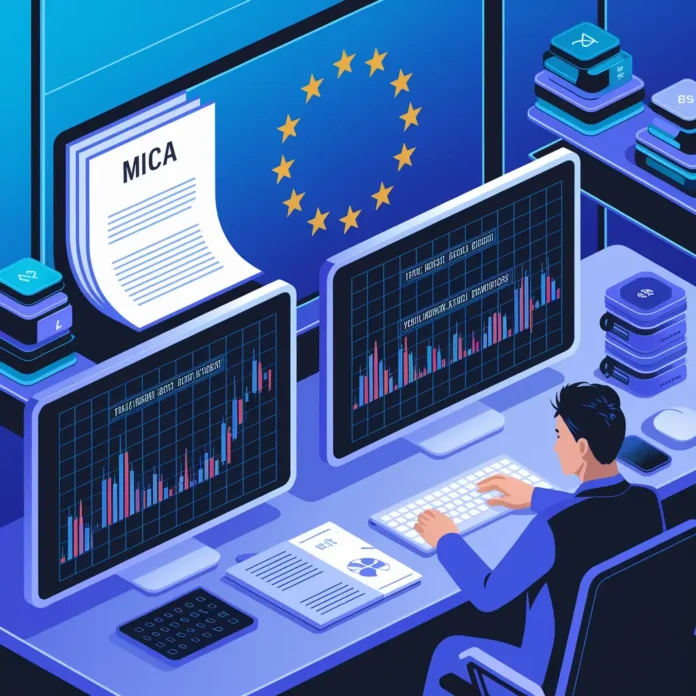MiCA Regulation defines a unified legal framework governing the crypto-assets market across the European Union (EU). Adopted on May 31, 2023, and fully applicable by December 30, 2024, MiCA—short for Markets in Crypto-Assets Regulation—brings consistency to what was once a fragmented regulatory environment. The regulation is designed to encourage innovation while enforcing strict protections for consumers and maintaining financial stability across the 27 EU member states.
Understanding MiCA Regulation: A New Era for Crypto Compliance
MiCA Regulation marks a turning point in the global discussion surrounding cryptocurrency regulation. Unlike jurisdictions with decentralized or state-led rules, MiCA provides a harmonized approach, ensuring all crypto service providers across the EU abide by uniform rules. This streamlined model removes ambiguity and offers a legal advantage to both businesses and users.
MiCA Regulation and Its Scope Across Crypto-Assets
The scope of MiCA Regulation extends to three principal categories of crypto-assets:
- Asset-Referenced Tokens (ARTs): These tokens maintain a stable value by pegging themselves to a basket of currencies, commodities, or other assets.
- E-Money Tokens (EMTs): Similar to electronic money, these are pegged to a single fiat currency.
- Other Crypto-Assets: Includes all assets not previously regulated under existing EU financial services laws, such as utility tokens.
These clearly defined categories provide market clarity, helping regulators and businesses develop appropriate compliance mechanisms.
Authorization Framework Under MiCA Regulation
Under MiCA Regulation, any Crypto-Asset Service Provider (CASP) must obtain authorization from a National Competent Authority (NCA). Once authorized, these businesses can operate across the EU under a “passporting” mechanism.
Key Authorization Requirements:
- Minimum capital reserves to ensure financial resilience
- Robust governance structures with accountability mechanisms
- Compliance with Anti-Money Laundering (AML) and Counter-Terrorism Financing (CTF) regulations
This authorization framework encourages both institutional trust and operational transparency.
MiCA Regulation and the Tight Control on Stablecoins
MiCA Regulation includes strict measures for stablecoin issuers, especially those offering ARTs and EMTs. Issuers must maintain sufficient reserves to cover redemption requests and show continuous transparency via whitepapers.
Obligations for Stablecoin Issuers:
- Hold liquid reserves equal to the value of issued tokens
- Ensure token holders have clear redemption rights at all times
- Submit detailed and regularly updated whitepapers
This regulatory framework reduces the risk of “bank run” scenarios and fosters trust in stablecoins as a reliable medium of exchange.
MiCA Regulation and Enhanced Consumer Protection
One of MiCA Regulation’s primary goals is to instill consumer confidence by mandating transparency and accountability.
- Whitepapers must cover risks, tokenomics, and user rights
- Penalty provisions for insider trading and market manipulation
- Obligatory disclosure of issuer identity and contact info
These protections curb speculative risks and promote a safer transaction environment.
What MiCA Regulation Excludes
Despite its breadth, MiCA Regulation intentionally leaves out certain sectors:
- Crypto-assets already regulated as financial instruments under MiFID II
- Decentralized Finance (DeFi) protocols
- Non-fungible Tokens (NFTs)
While these areas are not under MiCA currently, they may be included in future legislative updates as the market evolves.
MiCA Regulation Implementation Timeline
The rollout of MiCA Regulation occurs in stages:
- June 30, 2024: Provisions for ARTs and EMTs become binding
- December 30, 2024: All other provisions come into effect
This phased approach allows entities ample time to align operations with regulatory standards.
Pros and Cons of MiCA Regulation
Advantages:
- Regulatory Clarity: A unified legislative framework eliminates cross-border ambiguity
- Market Access: Passporting allows CASPs to operate EU-wide with a single license
- Consumer Trust: Transparency and anti-abuse mechanisms attract informed investors
Drawbacks:
- Compliance Burden: Smaller start-ups may find it financially taxing to comply
- Innovation Bottlenecks: DeFi and NFT markets remain unregulated, limiting innovation
- Jurisdiction Shopping: Companies may seek lenient interpretations in select member states
Real-World Applications of MiCA Regulation
Major crypto exchanges like Gemini and OKX have applied for MiCA licenses, showing that global players are adapting to this new rulebook. Malta’s early approvals of these platforms raised discussions about the uniformity of review processes across member states.

National Approaches to MiCA Regulation Implementation
France:
Utilizing its existing PSAN system, France has made MiCA compliance smoother for crypto businesses by accepting early applications from July 2024.
Spain:
Spain’s CNMV supports applicants with detailed manuals and encourages pre-filing consultations, expediting the process.
Romania:
By focusing on operational compliance, Romania has removed pre-authorization bottlenecks, enabling faster market access for CASPs.
Compliance Tips for MiCA Regulation
- Set Up Governance Structures: Define responsibilities clearly and establish oversight committees
- Enhance AML/CTF Systems: Use automated transaction monitoring and regular audits
- Mitigate Risks: Develop contingency plans for liquidity and cybersecurity incidents
MiCA Regulation Compared To Other Jurisdictions
Let’s explore how MiCA Regulation stacks up against approaches in the United States and United Kingdom.
| Criterion | EU (MiCA) | US | UK |
|---|---|---|---|
| Framework Type | Unified | Fragmented (state-level) | Narrow in scope |
| Market Access | Passporting across 27 countries | State-level licensing | Selective regulation |
| Focus Areas | All crypto-assets excluding DeFi & NFTs | Varies by jurisdiction | Initial focus on stablecoins |
Future of MiCA Regulation and the Evolving Crypto Sector
MiCA is not the end of regulatory evolution. The ESMA and EBA are already evaluating feedback for future adjustments, particularly for DeFi platforms and NFTs. As the crypto landscape matures, MiCA will likely undergo iterative enhancements to stay relevant.
Why MiCA Regulation Matters Globally
MiCA Regulation sets a precedent globally, showing how regulatory clarity can align consumer safety with innovation. Countries in Asia, Africa, and the Americas are closely monitoring MiCA’s effects to shape their own frameworks.
Actionable Next Steps for Businesses Under MiCA Regulation
- Assess if your offering falls under ARTs, EMTs, or Other Crypto-Assets categories
- Prepare detailed whitepapers aligned with MiCA disclosure norms
- Work with legal experts to ensure AML/CTF and risk management compliance
- Start early—licensing under MiCA may take several months
MiCA Regulation FAQs
What is MiCA Regulation?
MiCA stands for Markets in Crypto-Assets Regulation, a unified regulatory framework introduced by the EU to govern crypto-assets.
When does MiCA Regulation take full effect?
Initial provisions took effect on June 30, 2024, with all remaining rules becoming mandatory by December 30, 2024.
Does MiCA cover NFTs and DeFi?
No. MiCA currently excludes non-fungible tokens (NFTs) and decentralized finance (DeFi) platforms, though future updates may include them.
Can a business operate in all EU countries with one MiCA license?
Yes. The passporting mechanism allows a company licensed in one EU country to operate throughout the Union without additional approvals.
What are the penalties for non-compliance with MiCA?
Penalties can include fines, operational restrictions, or license revocations, depending on the severity of non-compliance.



